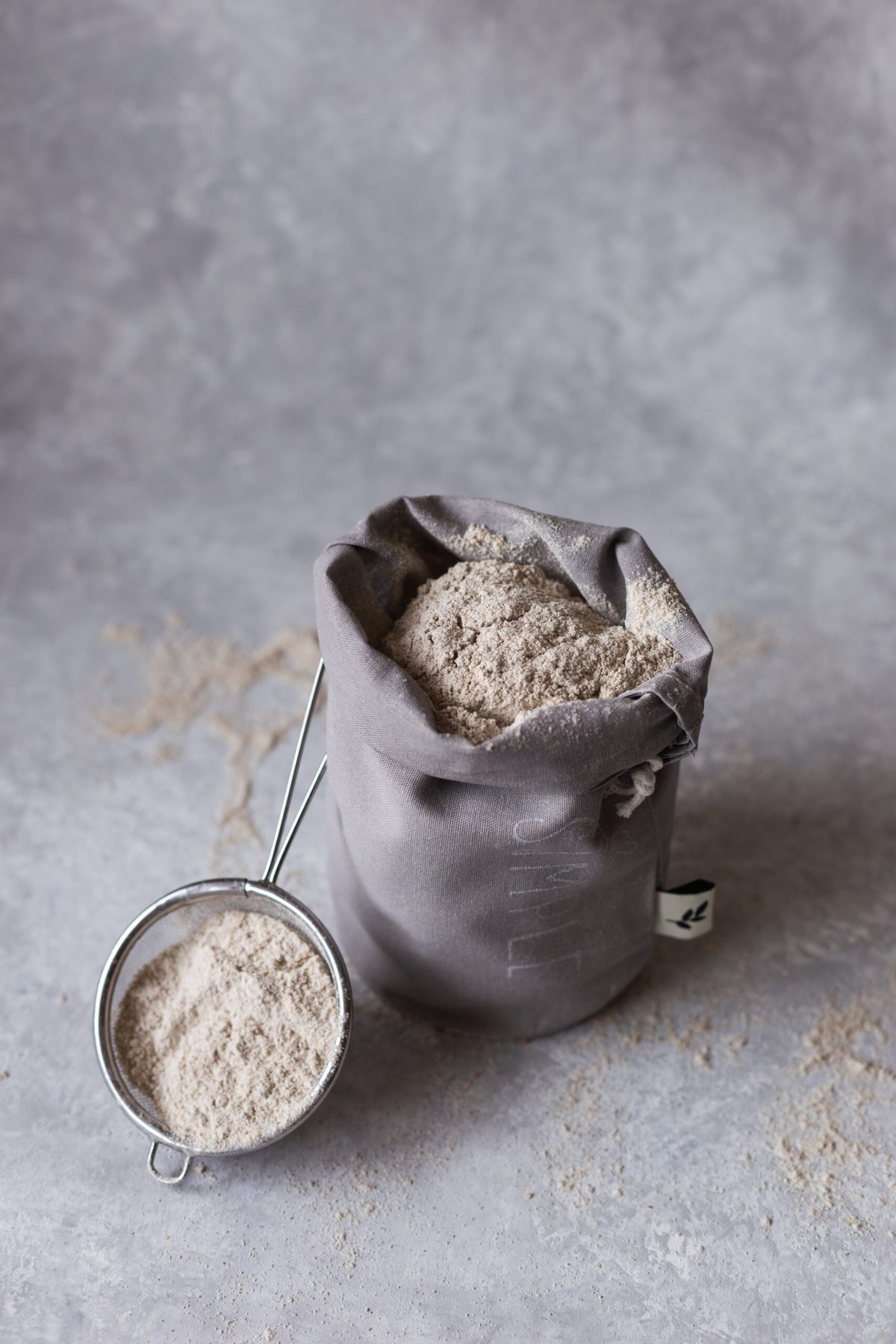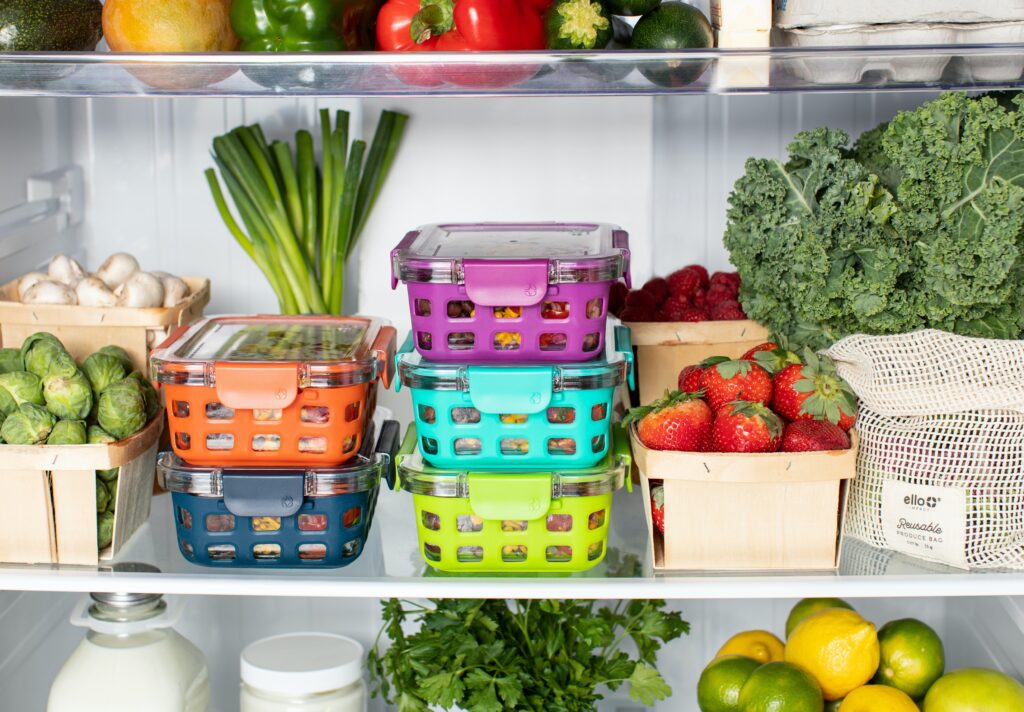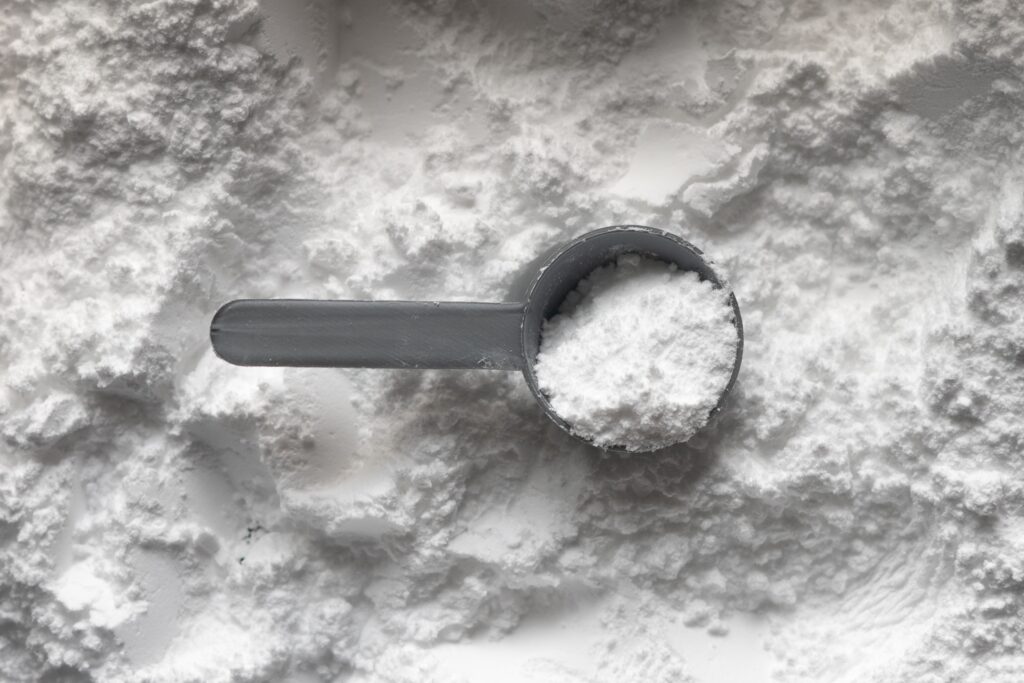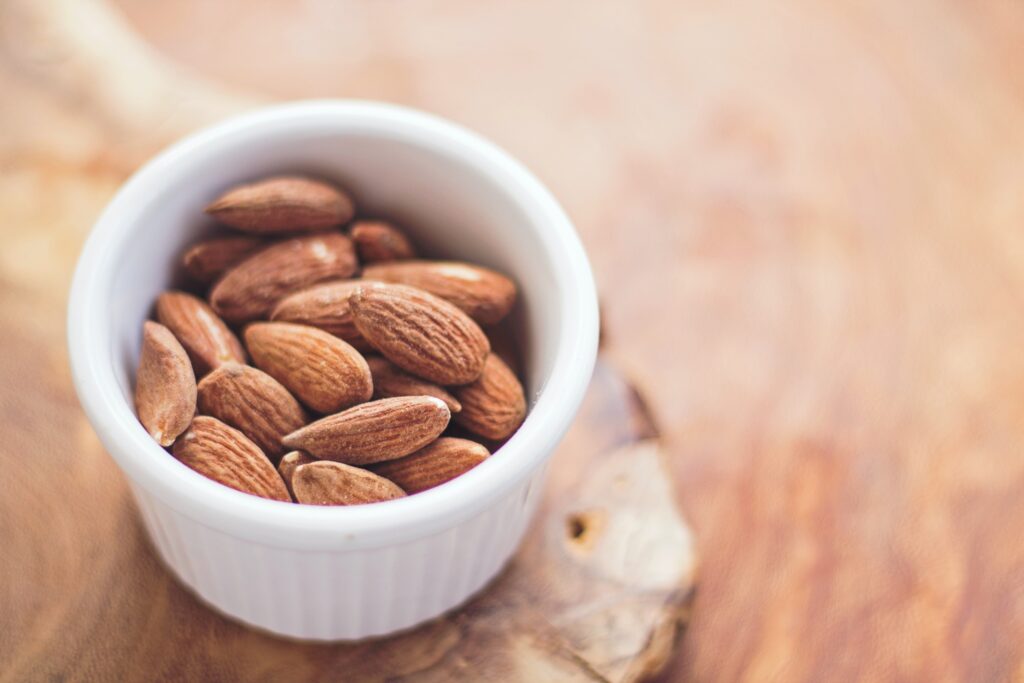
Why Flour Lasts Longer When Refrigerated + Gluten-Free Flour Alternatives
Why Flour Lasts Longer When Refrigerated + Gluten-Free Flour Alternatives
Why Flour lasts longer when Refrigerated + awesome Gluten-Free Flour Alternatives. To be refrigerated or to not be refrigerated? That is the question. And it’s not always an easy one. In fact, whether to refrigerate certain foods or not is a question that has many people wondering what the “right” thing to do is. If you start typing in “Should ketchup…” into Google, every single one of the autofill options are questions about whether America’s favorite condiment should be left in the fridge. Well, today we’re going to answer why flour lasts longer when refrigerated, plus some awesome gluten-free options.

Why Flour Lasts Longer When Refrigerated
If you’re like most people, your flour sits neatly in one of your kitchen cabinets along with things like sugar, baking soda, and other baking necessities. But you might be surprised to learn that flour actually lasts longer when refrigerated.
While white flour has a pretty long shelf life (about 3-8 months), most of us aren’t going through a sack of flour that quickly.
Also, whole wheat flour, as well as gluten-free flour, are known to have a shorter shelf life because of their higher fat content. But even if you’re going through a bag of flour of week, there are a few reasons why you should be keeping your flour in the refrigerator too.
How to Keep Flour as Fresh As Possible
The first thing most baking experts suggest when bringing home a fresh bag of flour is to pop it in the freezer for 48 hours before using it. While most flours are generally free of pests, putting your flour in the freezer for two days will kill any weevils or eggs that may already be there. Nobody wants a pest problem in their pantry, so I say better safe than sorry with this one!
Whether you choose to freeze your flour for 48 hours or not, there is one thing that almost everyone can agree on: move your flour to an airtight location. Even if your flour doesn’t arrive with any weevils or eggs, that paper sack is not going to do the best job at keeping them out—or any water that could spoil your flour more quickly.
Most people suggest using an airtight glass container, but you can also just pop the paper sack into a big Ziploc bag. After you have it safe from any pests and moisture, it’s time to pick a spot for baking’s #1 ingredient. Flour is best stored in a cool, dark, and dry environment. Things like too much heat or humidity can leave your flour clumpy or even make it go rancid.
Since flour thrives in a cool, dark, and dry environment, you might find that your pantry or kitchen cabinet works just fine for storage. But if you live in a warm-weathered or humid place, your best option is your fridge or freezer.
Shelf Life of Flour
Like I mentioned earlier, certain types of flour have a different shelf life than others. White flour is the most shelf-stable type of flour and some say that it can last up to 10 years in an airtight container in the refrigerator or freezer! But it’s probably best to replace your flour at least every year.
Since whole wheat flour contains wheat germ and has a higher fat content it has a higher rancidity potential and is only good for about three months. Gluten-free flours are generally safe for three to six months, but you should always verify on the package or with the brand itself.

How to know if your flour has gone bad?
The simplest way to know if your flour has gone bad is if you have flour bugs. These flour bugs are really tiny pests about 3 mm long with a reddish-brown color. Luckily, if you’ve been storing your flour in an airtight container you should have no issue with them!
Another way to tell if your flour has gone bad is by smelling and/or tasting it. If your flour has gone bad it will usually smell sour or musty. Flour generally doesn’t have a super strong smell so if it smells strongly of something unpleasant or off, it is most likely spoiled. It will also develop a slightly bitter taste.
Awesome Gluten-Free Flour Options
Gluten-Free Baking Flour
Gluten-free 1-to-1 Baking Flour is probably the easiest way to make any of your favorite baked goods gluten-free. I personally love the 1-to-1 Baking Flour from Bob’s Red Mill, but any gluten-free baking flour replacement will work. The flour is made with a mix of sweet rice flour, whole grain brown rice flour, potato starch, whole grain sorghum flour, and tapioca flour.
Using a flour mix like this one takes a lot of the trouble out of gluten-free baking because the flour does all the heavy lifting for you. Instead of measuring the perfect quantities of different gluten-free flours, you get it all done for you.
I use 1-to-1 Baking Flour in recipes like my Gluten-Free Pumpkin S’more Cookies because this flour is ideal for cookies, cakes, brownies, muffins, and more. I found that these gluten-free cookies came out chewy on the inside and crispy on the outside—which if you ask me is a win-win.
I also found Gluten-Free Baking Flour to work wonderfully in this Toasted Coconut Bread [Gluten-Free] or Vegan + Gluten-Free Apple Plum Crisp!
Gluten-Free All-Purpose Flour
Another done-for-you option is Gluten-Free All-Purpose Flour, which is also offered by Bob’s Red Mill as well as King Arthur Flour. This flour is made with flours like garbanzo bean flour, potato starch, whole grain white sorghum flour, tapioca flour and fava bean flour. It’s perfect for recipes that call for baking powder or yeast and is a superstar in pizza dough, pasta, and pie crust recipes.
I have personally used it in my Easy Gluten-Free Pizza Crust Recipe which turned out crispy, puffy in all the right places, and strong enough to hold all the toppings you could dream of!
Almond Flour
Almond flour is a naturally gluten-free flour that has been used for centuries. A lot of historians believe that almonds are among the oldest cultivated foods EVER and are even mentioned in the Old Testament.
Almond Flour was first used in the middle east before eventually being introduced to Italy through an almond flour cookie called maccherone. The maccherone would eventually find its way to France in the 16th century where it evolved into the French macaron, which is still gluten-free (and dairy-free!) to this day.
Bakers love almond flour for its classic nutty flavor, high nutritional value, and its delightful texture. I use almond flour in these Vegan + Gluten-Free Strawberry Banana Breakfast Muffins, which are fluffy, thick, and packed with flavor.
Oat Flour
Another popular gluten-free flour is oat flour. Oat flour has a ton of benefits. Not only has it been shown to help keep you full longer, but also reduces the risk of heart disease and lowers bad cholesterol. In the kitchen, oat flour is wonderful for adding extra flavor, lightening heavy textures, and enhancing chewiness.
I added oat flour (as well as almond) to these Vegan Gluten-Free Gingerbread Waffles and they couldn’t be more delicious. The oat flour creates a super light and fluffy texture and pairs perfectly with the fall and winter spices within the recipe.
Buckwheat Flour
Once one of the most popular gluten-free flours, buckwheat still holds a special place in many people’s kitchen cabinets. Buckwheat flour is chock full of nutrients and many people even consider it to be superfood.
Besides being a good source of protein, fiber, and energy, buckwheat flour also contains vitamins like thiamin, riboflavin, niacin, and folate. Buckwheat flour works wonderfully in crepes, pound cakes, and pancakes because it creates a light and tender texture along with a delicate, nutty flavor.
Black Beans
Gluten-free flour isn’t the only replacement for traditional flour. High carbohydrate foods like black beans can provide the starches needed to create a delicious dessert without flour.
Since black beans have a stronger flavor than most flours they are best paired with chocolate-based recipes (which also hide their dark color). Black beans are delicious when used as a flour replacement in gluten-free brownies, truffles, and cookies. They create a rich, moist flavor and pack a heavy dose of protein.
Overview of Gluten-Free Flour Alternatives
Overall, baking while gluten-free doesn’t have to be complicated. There are a ton of different gluten-free flour alternatives out there that help create delicious baked goods. Whether you’ve developed a sensitivity to gluten, have celiac disease, or are just looking to limit the gluten in your diet, reaching for gluten-free flour alternatives is a wonderful choice.
Just remember that gluten-free flours do tend to spoil more quickly so it is best to store it in the refrigerator so that they last longer. A lot of gluten-free flours come in plastic, resealable containers, which means they are much more durable than typical paper bags.
But, if your gluten-free flour does happen to come in a paper bag, consider moving it to an airtight glass container to keep it safe from moisture and pests.
I hope you enjoyed learning why flour lasts longer when refrigerated and some awesome gluten-free flour alternatives!









LOVE THIS RECIPE?
LET US KNOW!